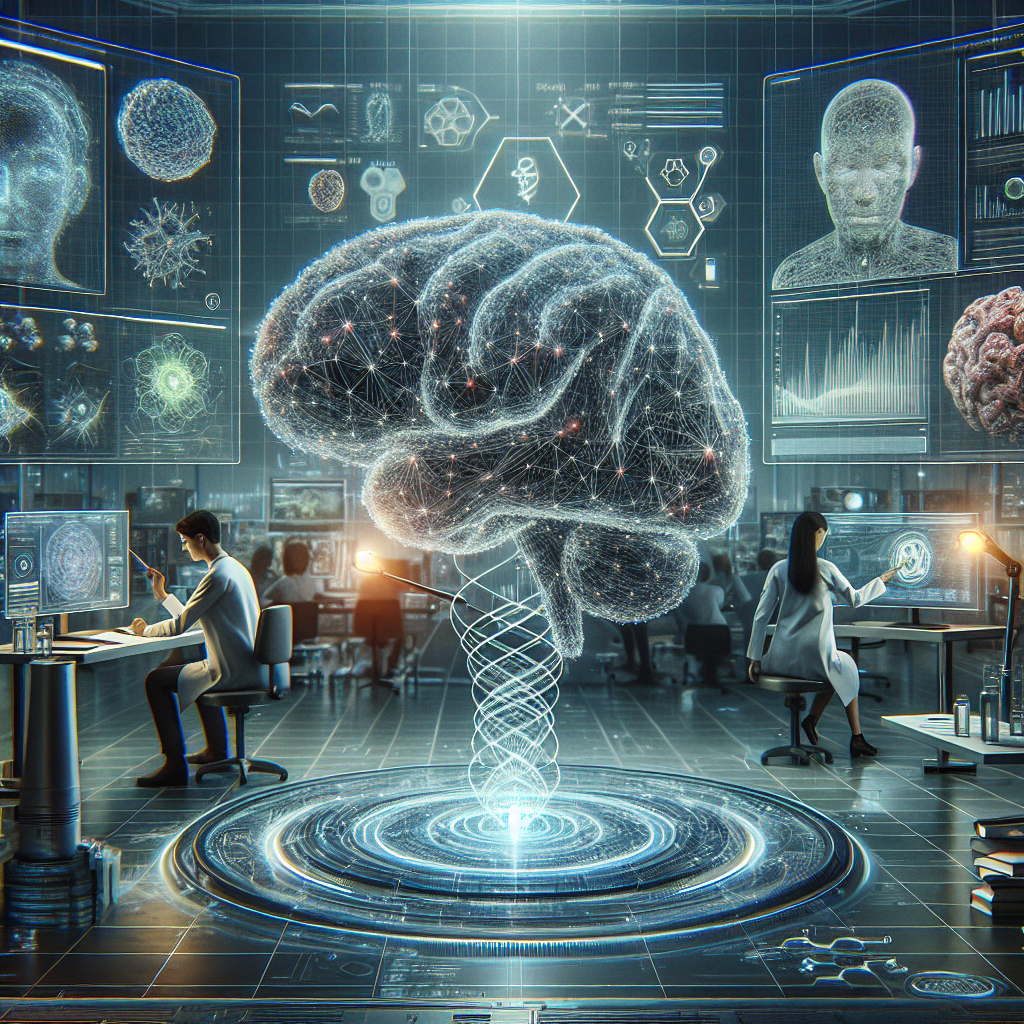Introduction
AI is revolutionizing cancer research by enhancing diagnostics, drug discovery, and personalized treatments. With advancements in machine learning, big data analytics, and cloud computing, AI systems are now integral to biotechnology. This guide will take you through the entire process of creating an AI system for cancer research, addressing challenges, best practices, and integration strategies.

Understanding AI in Cancer Research
At its core, AI in cancer research leverages algorithms to mimic human intelligence and assist in various tasks such as:
- Image-based cancer detection
- Genomic data analysis
- Drug discovery
- Personalized medicine
Key AI technologies used in cancer research include:
Natural Language Processing (NLP): Extracting insights from clinical records and research papers.
Machine Learning (ML): Algorithms that learn patterns from data to make predictions.
Deep Learning: Neural networks with multiple layers used for image and genomic data analysis.
Types of AI in Cancer Research
Artificial Narrow Intelligence (ANI): Focused on specific tasks like tumor detection in radiology images.
Artificial General Intelligence (AGI): Future AI capable of performing multiple tasks with human-like adaptability.
Artificial Superintelligence (ASI): Hypothetical AI surpassing human intelligence in all tasks.
What Is Required to Build an AI System?
To develop an AI system for cancer research, you need:
- High-quality datasets (medical images, genomics, clinical records)
- Machine learning models (supervised and unsupervised algorithms)
- Infrastructure (cloud platforms, GPUs)
- Programming knowledge (Python, R, TensorFlow, PyTorch)
- Ethical guidelines and regulatory compliance (GDPR, HIPAA)
Step-by-Step Guide to Building AI for Cancer Research
Step 1: Identifying the Problem & Defining Goals
Define the research question or clinical problem:
- Early cancer detection
- Drug target identification
- Predictive modeling for patient outcomes
Key Considerations:
- Feasibility
- Impact
- Data availability
Step 2: Data Collection & Preparation
- Data Sources: Public databases (TCGA, NIH), hospitals, biotech collaborations
- Data Cleaning: Handle missing values, outliers, and inconsistencies
- Data Privacy: Ensure compliance with data protection regulations
Tools: Pandas, NumPy, OpenCV
Step 3: Selection of Tools & Platforms
Choose the right tools based on project requirements:
- Programming Languages: Python, R
- ML Libraries: TensorFlow, PyTorch, Scikit-Learn
- Cloud Platforms: AWS, Google Cloud, Azure
Step 4: Algorithm Creation or Model Selection
- Image-Based Detection: CNNs (Convolutional Neural Networks)
- Genomic Data Analysis: Random Forest, SVM
- Text Analysis: NLP models like BERT
Pre-trained Models: ResNet, BioBERT
Step 5: Training the Model
- Split Data: Training (70%), Validation (20%), Testing (10%)
- Hyperparameter Tuning: Optimize learning rates, batch size, and architecture
- Use Transfer Learning for faster training
Tools: TensorFlow, Keras, PyTorch
Step 6: Model Evaluation
- Accuracy, Precision, Recall, F1-score
- ROC-AUC for classification models
- Cross-validation.
Tools: Scikit-Learn, TensorBoard
Step 7: Deployment
- Develop API-based solutions or web applications
- Cloud or on-premise deployment
- Ensure interoperability with existing hospital systems
Tools: Docker, Kubernetes
Step 8: Monitoring & Regular Updates
- Set up monitoring dashboards
- Retrain models with new data
- Address model drift
Tools: TensorBoard, Google Cloud Monitoring
Challenges in Building AI for Cancer Research
- Data scarcity and imbalance
- Ethical concerns around patient data
- Interpretability of deep learning models
- Regulatory compliance
Best Practices
- Use diverse datasets to avoid bias
- Regularly validate model performance
- Collaborate with oncologists and data scientists
- Adopt Explainable AI (XAI) techniques
Conclusion
Building AI for cancer research involves technical complexity and interdisciplinary collaboration. By following this step-by-step guide, biotech companies and researchers can harness AI’s power to improve cancer diagnostics, treatment, and drug discovery.
Would you like help setting up your AI system or customizing an AI model for your biotech research?


Leave a Reply